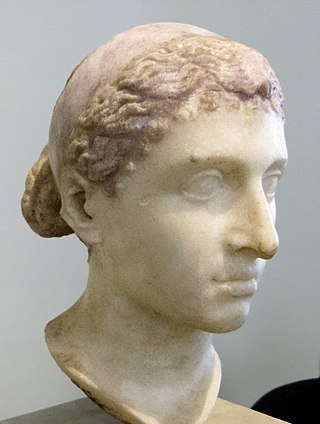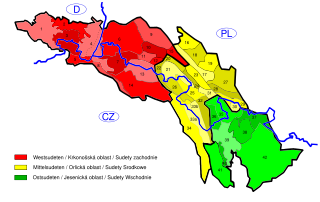Related Research Articles

Claudius Ptolemy was an Alexandrian mathematician, astronomer, astrologer, geographer, and music theorist, who wrote about a dozen scientific treatises, three of which were of importance to later Byzantine, Islamic, and Western European science. The first is the astronomical treatise now known as the Almagest, although it was originally entitled the Mathēmatikē Syntaxis or Mathematical Treatise, and later known as The Greatest Treatise. The second is the Geography, which is a thorough discussion on maps and the geographic knowledge of the Greco-Roman world. The third is the astrological treatise in which he attempted to adapt horoscopic astrology to the Aristotelian natural philosophy of his day. This is sometimes known as the Apotelesmatika but more commonly known as the Tetrábiblos, from the Koine Greek meaning "Four Books", or by its Latin equivalent Quadripartite.

The Ptolemaic dynasty, also known as the Lagid dynasty, was a Macedonian Greek royal house which ruled the Ptolemaic Kingdom in Ancient Egypt during the Hellenistic period. Reigning for 275 years, the Ptolemaic was the longest and last dynasty of ancient Egypt from 305 until its incorporation into the Roman Republic in 30 BC.

Cleopatra VII Thea Philopator was Queen of the Ptolemaic Kingdom of Egypt from 51 to 30 BC, and its last active ruler. A member of the Ptolemaic dynasty, she was a descendant of its founder Ptolemy I Soter, a Macedonian Greek general and companion of Alexander the Great. After the death of Cleopatra, Egypt became a province of the Roman Empire, marking the end of the last Hellenistic-period state in the Mediterranean and of the age that had lasted since the reign of Alexander. Her first language was Koine Greek and she is the only known Ptolemaic ruler to learn the Egyptian language.

Ptolemy XII Neos Dionysus was a king of the Ptolemaic Kingdom of Egypt who ruled from 80 to 58 BC and then again from 55 BC until his death in 51 BC. He was commonly known as Auletes, referring to his love of playing the flute in Dionysian festivals. A member of the Ptolemaic dynasty, he was a descendant of its founder Ptolemy I, a Macedonian Greek general and companion of Alexander the Great.

Cleopatra V was a Ptolemaic Queen of Egypt. She is the only surely attested wife of Ptolemy XII. Her only known child is Berenice IV, but she was also probably the mother of Cleopatra VII. It is unclear if she died around the time of Cleopatra VII's birth in 69 BC, or if it was her or a daughter named Cleopatra VI who co-ruled Ptolemaic Egypt with Berenice IV in 58–57 BC during the political exile of Ptolemy XII to Rome. No written records about Cleopatra V exist after 57 BC and two years later Berenice IV was overthrown by Ptolemy XII, his throne restored with Roman military aid.

The Diduni or Dunii were a Germanic tribe mentioned only by the 2nd century geographer Claudius Ptolemy. They apparently dwelt near the Asciburgius mountains which correspond to the north central parts of Sudetes in western-southern Poland. According to Ptolemy, they were part of the larger tribal group, the Lugii. The Diduni are may be connected to the town of Iugidunum, which Ptolemy places in the same area as he places the tribe.
The Avarpi or Auarpoi or Avarni were Germanic tribe attested in Ptolemy's Geography. The attested Greek is Auarpoi. Avarpi is a scholarly transliteration into Latin, with some using Avarni on the assumption that the name refers to the Varni of Mecklenburg. However, Ptolemy uses Farodeinoi for Varini and clearly says that the Auarpoi are next to the Teutonikai and between the Sueboi and the Farodeinoi. This location is not precise, but is somewhere in the Pommern/Propommern region.
The Bateinoi or Batini were a Germanic tribe recorded by the Roman scholar Claudius Ptolemy. According to Ptolemy they were located "above" the Banochaemae tribe, who were settled near the upper Elbe, and "below" the Asciburgius mountain. That is all history knows for certain about them.

Lyrbe was an ancient city and later episcopal see in the Roman province of Pamphylia Prima and is now a titular see.

The Ptolemaic Kingdom or Ptolemaic Empire was an Ancient Greek state based in Egypt during the Hellenistic period. It was founded in 305 BC by the Macedonian general Ptolemy I Soter, a companion of Alexander the Great, and ruled by the Ptolemaic dynasty until the death of Cleopatra VII in 30 BC. Reigning for nearly three centuries, the Ptolemies were the longest and final dynasty of ancient Egypt heralding a distinctly new era for religious syncretism and the blending of a new Greco-Egyptian culture.
Setidava, mentioned by Ptolemy in his Geography, was a Dacian outpost in north central Europe. This town, with the typical Dacian location name ending of -dava, was mentioned in Ptolemy's Germania, who placed it north of Calisia (Kalisia), which is probably located at the present-day town of Kalisz, in Poland. Setidava was not far from the Warta River; most likely it was located in present-day Żnin.
Octapolis or Oktapolis was a town of ancient Caria or Lycia, noted by Ptolemy.
Lissa was a town of ancient Lycia, mentioned by Ptolemy.
Diocaesarea or Diocaesareia or Diokaisareia was a Graeco-Roman town located in ancient Cappadocia near Nazianzus. According to Gregorius of Nazianzus, it was a small place. It is mentioned by Ptolemy and by Pliny the Elder.
Ischopolis (Ἰσχόπολις) was a city in ancient Pontus. It was near Pharnacia, and was in ruins even in the time of Strabo, but is still noticed by Ptolemy.
Cordyle or Kordyle, also called Portus Chordyle, was a town of ancient Pontus, on the Black Sea coast, 40 or 45 stadia east of Hieron Oros or Yoros. The name occurs in the Tabula Peutingeriana in the form Cordile. There appears to be some confusion in Ptolemy about this place.
Cyzistra or Kyzistra was a town of ancient Cappadocia, inhabited during Roman and Byzantine times. It was mentioned by Ptolemy.
Tynna, possibly also known as Dana, was a town of ancient Cataonia or of southern Cappadocia mentioned by Ptolemy. It was located in the neighbourhood of Faustinopolis, and inhabited through Roman times.
Ochras was a town of ancient Cappadocia mentioned by the Antonine Itinerary. Ptolemy mentions a place Odogra or Odoga, in the district of Chammanene in Cappadocia, between the Halys River and Mount Argaeus, which William Smith conjectured was possibly the same as Ochras. Modern scholars do not accept the equivalence.
Saurania, or Sauronisena, or Saunaria (Σαυναρία), was a town of ancient Pontus, inhabited during Roman and Byzantine times. It was in the later province of Pontus Polemoniacus, and mentioned by Ptolemy.